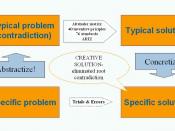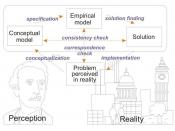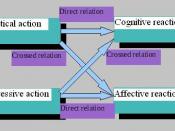Conflict, which is a natural outcome of human interaction, begins when one individual perceives that his or her goals, attitudes, values, or beliefs are incongruent with those of another individual. I will discuss three conflict management approaches/styles that are used in my United States Army unit.
Understanding Conflict Issues
The presence of conflict among employees can have both negative and positive consequences for organizations. Perhaps most evident are the negative consequences, which include dysfunctional behaviors such as low work effort stemming from stress and poor interpersonal relations between the conflicting employees. Possible positive consequences include enhanced creativity and innovation, higher quality decision-making, and improved mutual understanding. Conflict is an inevitable part of the human relatedness process. Conflict is "the interaction of interdependent people who perceive opposition of goals, aims, and values, and who see the other party as potentially interfering with the realization of these goals (Rahim 200)".
Utilized Conflict Management Approaches/Styles
Discussed below are the three conflict management approaches/styles that are used in my United States Army unit:
1. Integrating, which involves high concern for self as well as the other party, has also been described as problem solving, collaboration, cooperation, solution-orientation, win-win, or positive-sum style. Integrating involves active participation between the parties such as openness, exchange of information, and examination of differences to reach a solution that satisfies the concerns of both parties. "The first rule ... for obtaining integration is to put your cards on the table, face the real issue, uncover the conflict, bring the whole thing into the open" (Follett, 1940, p. 38). Prein (1976) suggested that this style has two distinctive elements: confrontation and problem solving. Confrontation involves open and direct communication that should make way for problem solving.
2. Dominating, which involves high concern for self and low concern for the other party,



Thank you
your information has been great help, thank you.
1 out of 1 people found this comment useful.